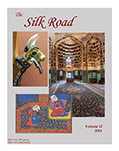|
| |
| Silk Road Dress in a Chinese Tomb: Xu Xianxiu and Sixth-Century Cosmopolitanism
| 1 + Plate I |
| by Kate A. Lingley |
Download |
| The well-preserved murals in the tomb of a Chinese official excavated at Taiyuan illustrate interesting cosmopolitan features of costume in the Northern Qi period of the late 6th century.
|
| |
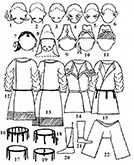 
|
Images of the Early Turks in Chinese Murals and Figurines from the Recently-Discovered Tomb in Mongolia |
13 |
| by Sergey A. Yatsenko |
Download |
| The discovery of a Chinese-style tomb decorated with murals at Shoroon Bumbagar in Mongolia was an important event, since the murals and the funerary figurines it contained reveal a great deal about the costume of the early Turks who were commemorated there.
|
|
| |
|
| Connections between Central Asia and the Northern Littoral of the Black Sea: the Evidence from Objects with Tamgas
| 25 + Plate II |
| by Sergey V. Voroniatov |
Download |
| Symbols found on various objects in early burials across Eurasia often may be interpreted as tamgas of individuals or their clans. This article broadens the consideration of such evidence in arguing for connections between the early nomads in both East and West.
|
| |
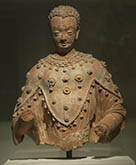 
|
Some Examples of Central Asian Decorative Elements in Ajanta and Bagh Indian Paintings
| 39 + Plates III, IV |
| by Matteo Compareti |
Download |
| The richly painted caves at Ajanta and Bagh in India depict various ethnic groups and artefacts of their culture. The article here explores some of the decorative motifs and suggests they may have originated in Bactria-Tokharistan.
|
|
| |
| The Afrasiab Murals: a Pictorial Narrative Reconsidered | 49 |
| by Guitty Azarpay |
Download |
| One of the leading experts on Sogdian painting reviews and reconsiders the imagery painted in the famous "Hall of the Ambassadors" at Afrasiab (ancient Samarkand). |
| |
 
|
The Performance of Pain and Remembrance in Late Ancient Iran | 57 |
| by Touraj Daryaee and Soodabeh Malekzadeh |
Download |
| Given the strictures regarding self-mutilation and other extreme expressions of grief in mourning rituals among several of the world religions, it may seem surprising that amongst the Shiia and also in some early Buddhist contexts we find rituals or imagery with such manifestations of grieving. It is possible that the explanation lies in early, pre-Islamic traditions in Iran. |
|
| |
| Russo-Polovtsian Dynastic Contacts as Reflected in Genealogy and Onomastics | 65 |
| by Anna Litvina and Fjodor Uspenskij |
Download |
| A close examination of naming practices, which can be explained by dynastic matrimonial ties, sheds new light on the relations between the nomadic Polovtsy and the princes of the Rus. |
| |
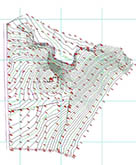 
| Excavation of Rezvan Tepe in Northeastern Iran, an Iron Age I-II Cemetery | 76 |
| by Mahnaz Sharifi and Abbas Motarjem |
Download |
| Relatively little excavation has been done to date at Iron Age sites in northeastern Iran. This small salvage excavation reveals interesting details about an Iron Age cemetery.
|
|
| |
| The Site of Banbhore (Sindh-Pakistan): a Joint Pakistani-French-Italian Project. Current Research in Archaeology and History (2010-2014) | 82 |
| by Niccolò Manassero and Valeria Piacentini Fiorani |
Download |
This site in the Indus River delta on the Indian Ocean coast was undoubtedly an important port from early times, possibly the famous Barbarikon. Preliminary excavations of decades ago have now been resumed in this major international effort which is already revealing interesting data for establishing the chronology and identity of the site.
|
| |
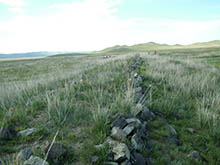 
|
Emgentiin Kherem, a Fortress Settlement of the Khitans in Mongolia | 89 |
| by Nikolai N. Kradin, Aleksandr L. Ivliev, Ayudai Ochir, Sergei Vasiutin, Svetlana Satantseva, Evgenii V. Kovychev and Lkhagvasüren Erdenebold |
Download |
| Joint Russo-Mongolian excavations of Khitan period sites in Mongolia continue, the one reported here being for a small fortified site that may well have been home to a mobile garrison.
| |
| |
| The Carpet Index: Rethinking the Oriental Carpet in Early Renaissance Paintings | 98 |
| by Lauren Arnold |
Download |
| Traditional interpretations of the depiction of Oriental carpets in Renaissance religious paintings argue that the objects are luxury items produced by Islamic craftsmen. A systematic examination of such paintings and other evidence suggests, on the contrary, that the rugs were important relics preserved and possibly produced in Christian contexts which were brought to Italy by emigres from the East.
|
| |
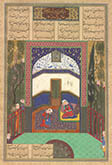 
|
Safavid Carpets of the Tahmasp School and the Tahmasp Shahnama | 106 + Plates VII, VIII |
| by Gholamreza Yazdani, Mina Ranjbar, Masume Azarmdel and Maryam Rezai Bamnafshe Deraq |
Download |
| This richly illustrated article shows how a careful examination of motifs in carpets depicted in one of the most famous illustrated manuscripts of the Shahnama can be correlated with the designs in the actual carpets produced at that time. |
|
| |
| Huang Wenbi: Pioneer of Chinese Archaeology in Xinjiang | 122 |
| by Justin M. Jacobs |
Download |
Relegated to obscurity for many years, the pioneering Chinese archaeologist Huang Wenbi, who locked horns occassionally with Sven Hedin on his last expedition, is now being re-discovered for the important contributions he made to the early archaeological exploration along the Silk Road. The article argues he might be seen as the Chinese Aurel Stein.
|
| |
| Featured Museum I:The David Collection | 132 + Plate IX |
| by Daniel C. Waugh |
Download |
| One of the most important collections of Islamic Art in the world. Located in Copenhagen, it is the leading one in Scandinavia. The article explores the collection via the new volume of the museum's journal and the excellent website.
|
| |
| Featured Museum, II:The Arts of China in Seattle | 137 + Plates X-XIII |
| by Daniel C. Waugh |
Download |
| The outstanding collection whose core is that assembled by Richard Eugene Fuller, the museum's founding director. Under Mimi Gardner Gates, the director from 1994-2009, the collection has continued to expand, and the museum has positionied itself for the 21st century. The innovative online catalog of Chinese and calligraphy she and former curator Josh Yiu developed sets a standard for Internet-based access to art collections.
|
| |
| Featured Review
|
| |
| Re-Imagining and Re-Imaging Eurasian Exchange, | 153 + Plates XIV-XVI |
| by Daniel C. Waugh | Download |
| A review of Toby C. WIlkinson, Tying the Threads of Eurasia: Trans-regional routes and material flows in Transcaucasia, eastern Anatolia and western central Asia, c. 3000-1500 BC (2014) and the accompanying website. |
| |
| Reviews (by Daniel C. Waugh)
| Download all these reviews. | 164 |
| |
| Review of Reconfiguring the Silk Road. New Research on East-West Exchange in Antiquity, Ed. by Victor Mair and Jane Hickman | 164 |
| |
Review of James A. Millward, The Silk Road: A Very Short Introduction (2013)
| 167 |
| |
Review of Court and Craft: A Masterpiece from Northern Iraq, Ed. by Rachel Ward
, | 169 |
| |
Review of Kochevniki Evrazii na puti k imperii. Iz sobraniia Gosudarstvennogo Ermitazha. Katalog vystavki (2012)
| 171 |
| |
| Review of Sogdiitsy, ikh predshestvenniki, sovremenniki i nasledniki. Na osnove materialov konferentsii “Sogdiitsy doma i na chuzhbine”, posviashchennoi pamiati Borisa Il’icha Marshaka (1933–2006) / Sogdians, Their Precursors, Contemporaries and Heirs. Based on proceedings of conference “Sogdians at Home and Abroad” held in memory of Boris Il’ich Marshak (1933–2006) | 172 |
| |
| Review of Scripta Antiqua. Voprosy drevnei istorii, filologii, iskusstva i material’noi kul’tury. Almanakh / Scripta Antiqua.
Ancient History, Philology, Arts and Material Culture. The Almanac, Vols. I–III. (2011-2014) | 175 |
| |
| Review of O. V. D'iakova, Gosudarstvo Bokhai: arkheologiia, istoriia, politika / Pohai State: Archeology, History, Politics (2014) | 178 |
| |
| Review of CDs and DVD of Kazakh music and epic | 180 |
| |
| |
, Vol. 12 (2014),








